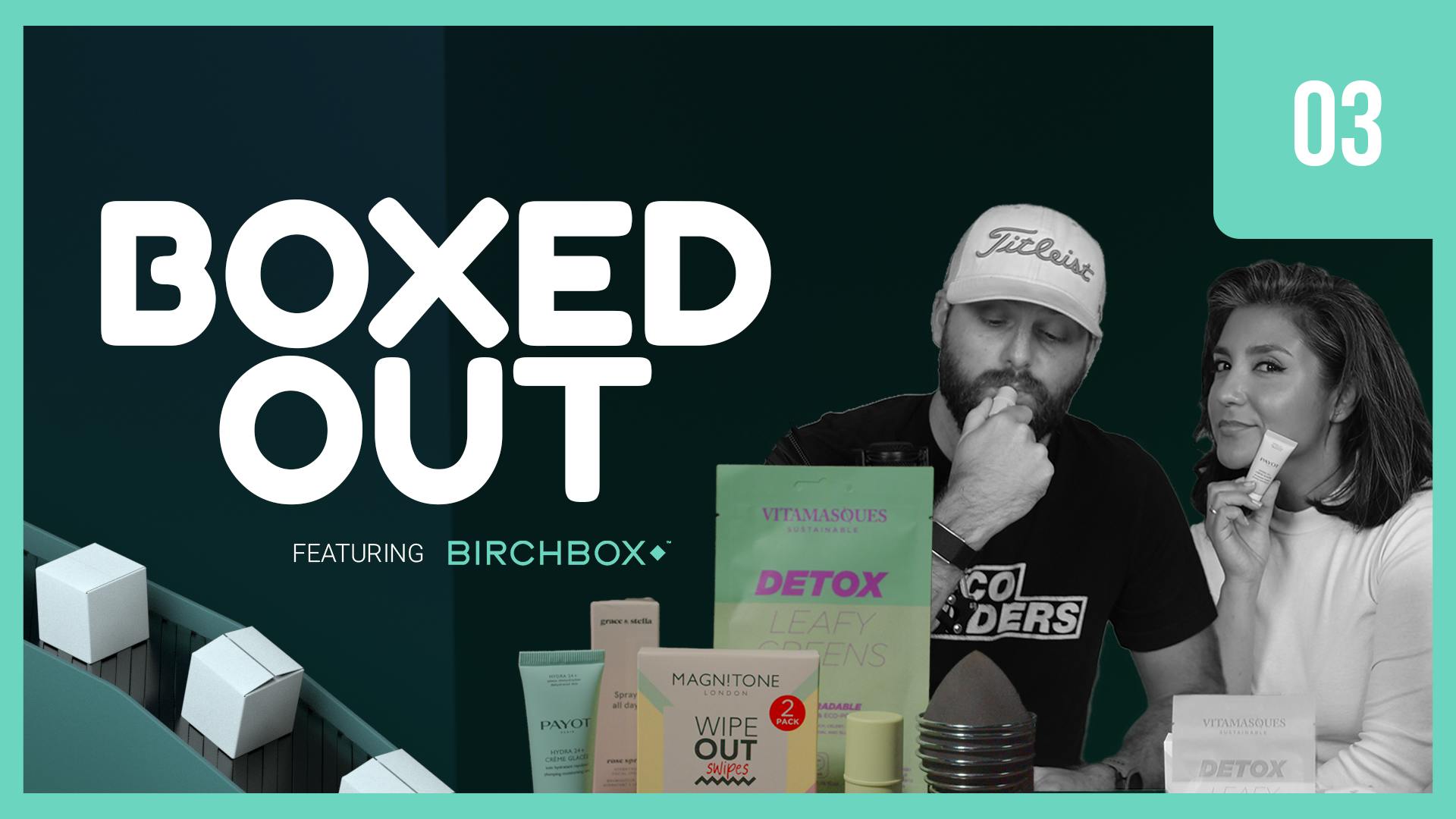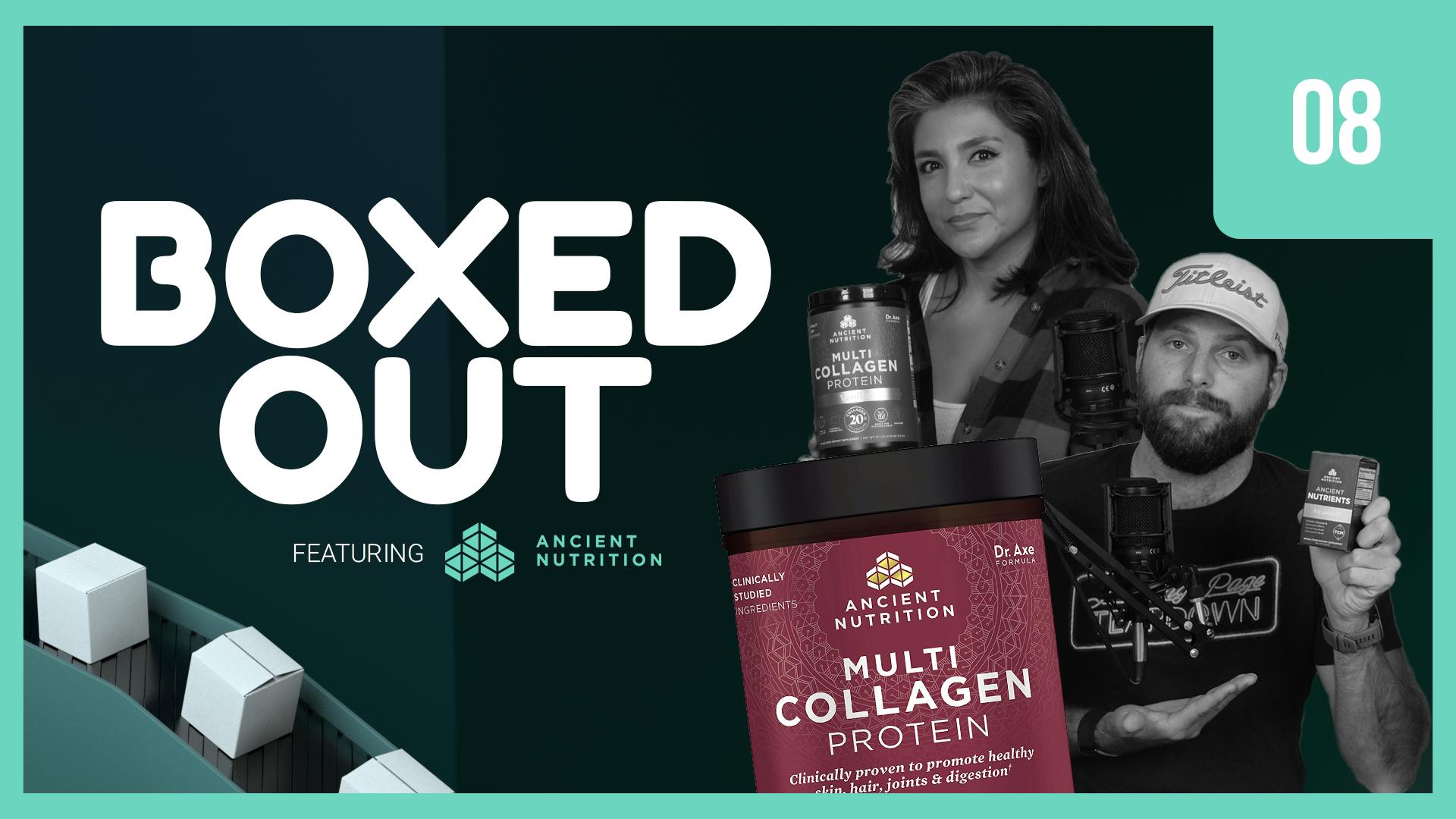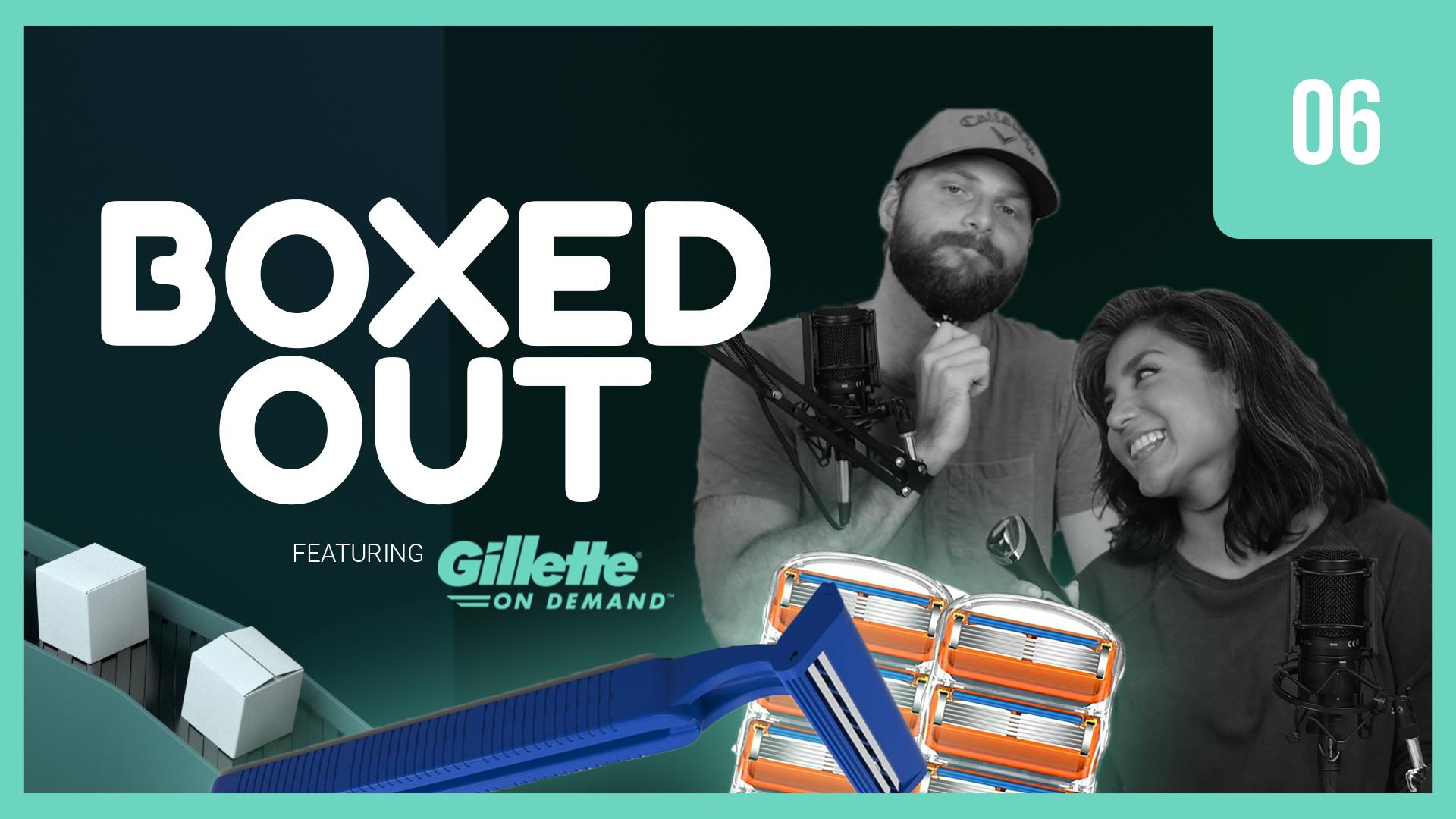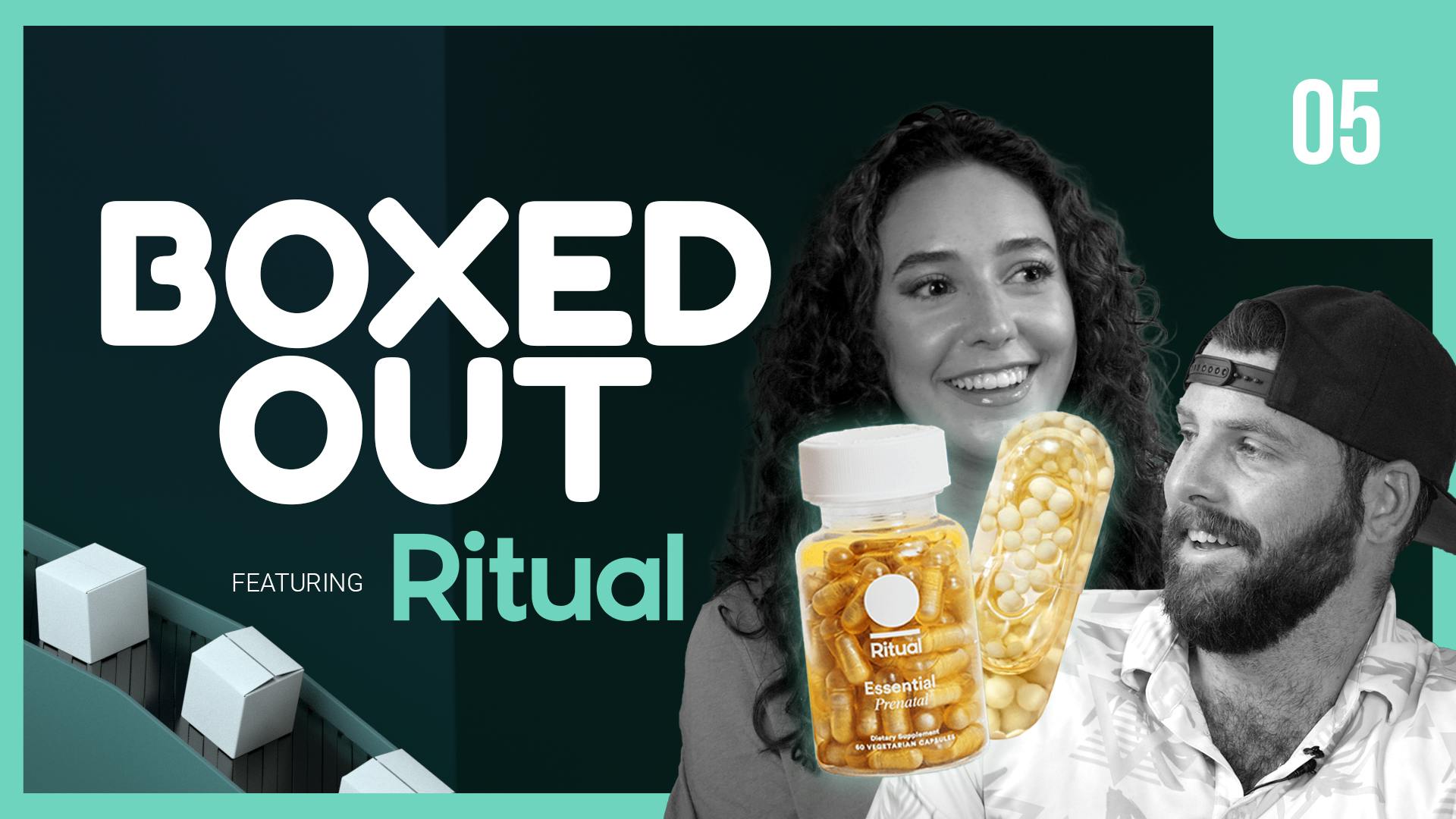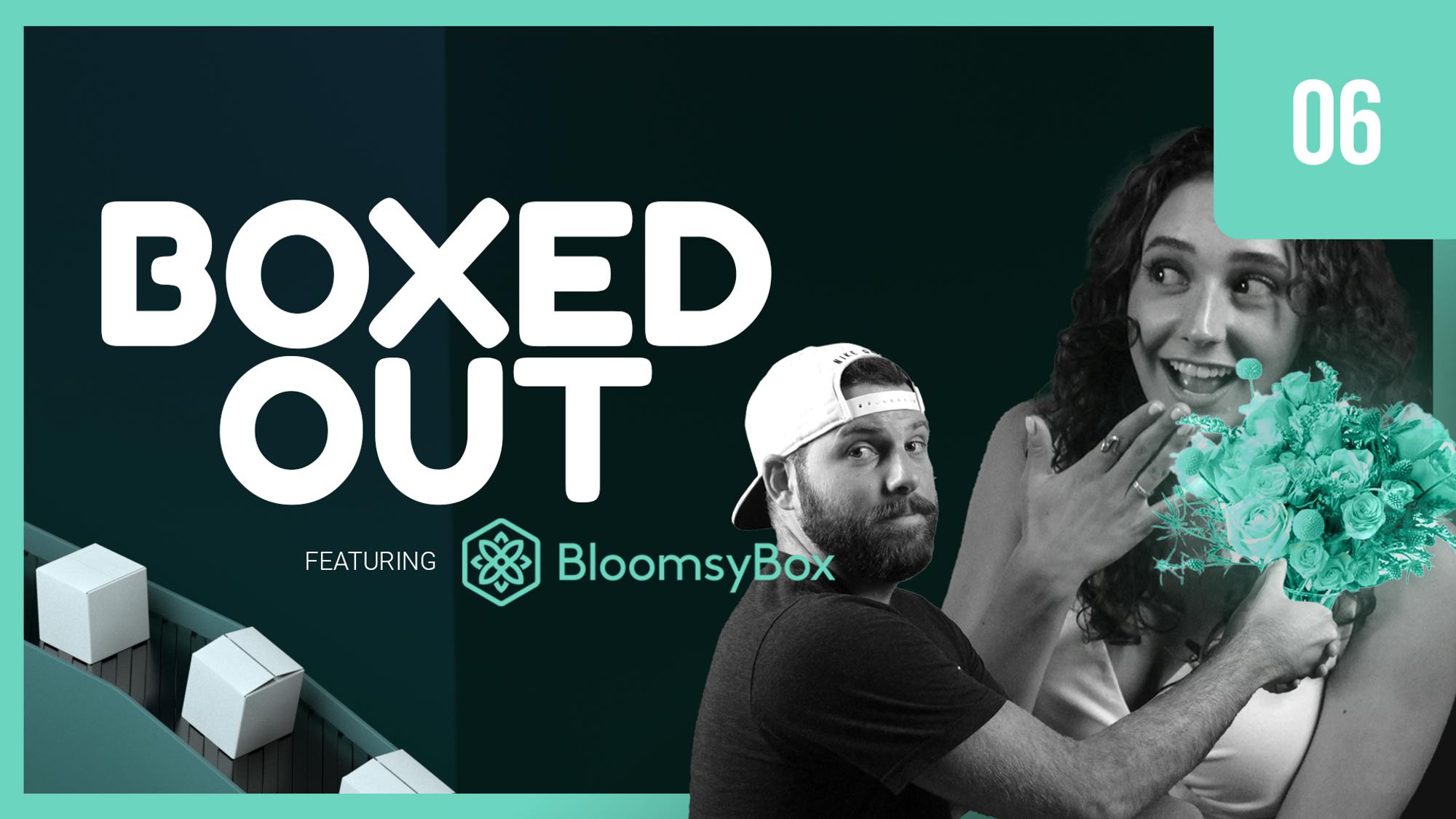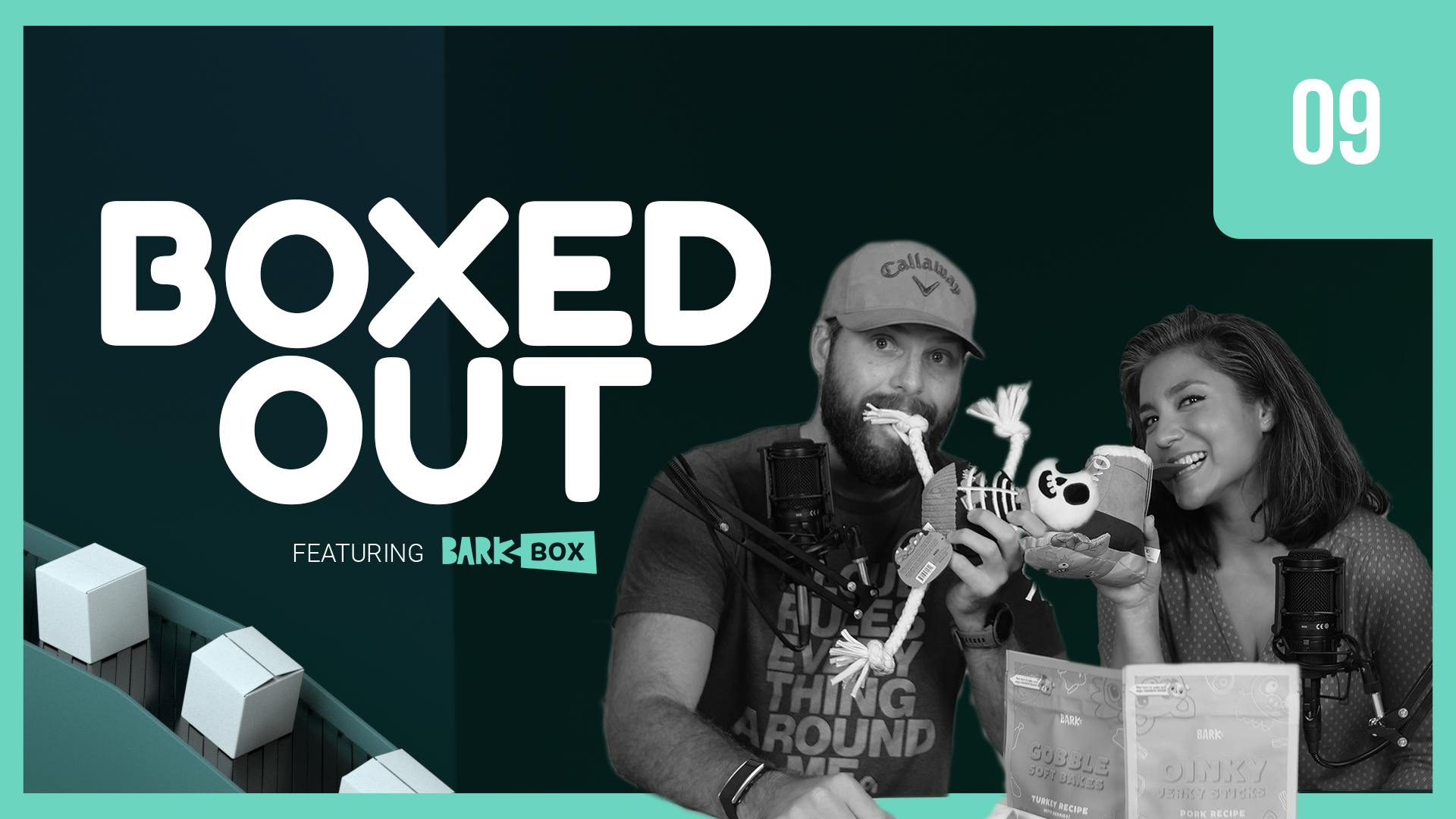
eSalon — a customized way to dye
This episode might reference ProfitWell and ProfitWell Recur, which following the acquisition by Paddle is now Paddle Studios. Some information may be out of date.
Please message us at studios@paddle.com if you have any questions or comments!
Today we're talking about eSalon, a company that's revolutionized the home hair color market. We're going to learn how eSalon is killin’ it with its customization and convenience. Then, we're gonna jump into what it is doing great—and not so great—with its subscription retention strategy, wrapping this all up into a nice case study for improvements for your own brand.
eSalon successfully entered a massive industry and managed to differentiate itself by bringing quality, customization, and convenience to the market. Its goal is to further improve communication between its brand and customers so the service can even more precisely match the goals of those who purchase. But is that enough to keep customers around for the long term?
Key takeaways:
- Free gifts and a solid customization flow go a long way
eSalon does a great job when it comes to customization and asking questions to ensure customers get what they need. Additionally, it offers a first-order free bonus which encourages customers to purchase.
Gifts tend to increase average order value by 20%, and boost retention 10%-15% for those customers who opted in for a gift. - Add-ons significantly increase LTV
Keep in mind that though you want to ensure your add-ons complement your core product, you also want to offer add-ons that are needed on a recurring basis. Add-ons are one of the most underutilized tactics of subscription companies. A lot of brands will add the one-time add-on, but subscription revenue add-ons keep on giving.
Lifetime value for customers with at least one add-on is typically 18%-54% higher than those without, not only because the customer is buying more, but because they tend to stick around longer. - Offer the option to upgrade to a quarterly or annual plan
Put together paths within the order flow and post-checkout to get your monthly customers to commit to longer-term plans. New customers may want to try the product out before committing to something longer term, so remind them through a plain text email with an offer, and then a one-click upgrade to a longer-term plan.
Quarterly, semi-annual, and annual subscriptions all improve retention immensely, and tend to have 200% to 400% higher lifetime value.
eSalon
The hair color market is a multi-billion dollar industry and is expected to reach $36.1 billion by 2027. It’s a huge industry that was fueled even further by the COVID-19 pandemic.
While there are plenty of options for hair color on store shelves around the world, there is still that chance of buying the wrong kind of dye. Retail stores simply can’t offer the same personalization and customization that salons do. eSalon decided to change that by providing high quality and customized hair color specific to each customer as well as the convenience of not having to leave their home. Essentially, it brings the salon to you.
eSalon was founded by former PriceGrabber Vice-President Francisco Giminez, three of the original founders of that company, and a personal friend of Francisco. They set out to find a large consumer market in which they could innovate and learned how salons create custom hair color for clients. eSalon cofounder Tamim Mourad thought of the DTC companies that sell customized vitamins to consumers and figured his group could do the same thing with hair color.
Starting with almost no knowledge of how hair color works, the founders set out to learn as much as they could about the process so they could flesh out the framework of their business. Once it was clear the business idea would work, a staff of expert colorists was brought on board to provide the knowledge needed for eSalon to succeed. The company was launched in 2010.
eSalon's success
Salon-quality ingredients and education are two main contributing factors for eSalon’s success.
Like many DTC businesses, eSalon benefits from the fact that going directly to consumers affords them high margins, which in turn allows them to use higher quality ingredients. The result is a salon-quality product at a boxed-color price.
eSalon could not survive on product quality alone, however. In the early days of the company's founding, Francisco quickly noted the in-salon dye application process greatly impacts how well the results turn out. To replicate that for home users, eSalon educates users about the process typically used in salons.
eSalon's flagship product is its customized hair color. To create this color, the company has customers fill out a questionnaire before they get to work one-on-one with an expert colorist. The product is so highly personalized that customers receive just the right amount of dye for their color goal and hair length. The coloring is available in a permanent solution and a semi-permanent option that lasts up to 24 washes.
Building upon the success of its hair color products and to take advantage of product segmentation, the company also offers customized hair care products. These products include shampoo, conditioner, and masque and are personalized both for hair care goals and fragrance preference. These products are customized using a similar questionnaire as the one used for hair coloring. The questions are designed to learn about the customer's hair type, problem areas, current routine, and hair goals.
Since its founding, eSalon has sold over 2.2 million units of hair color, which represents over 120,000 unique color combinations. By 2014, the company had found its way to number 74 on the Inc. 5000 list and had earned over $17 million dollars.
The goal of the company is to further improve communication between its brand and customers. This is so the service can even more precisely match the goals of those who purchase. eSalon is bringing quality, customization, and convenience to an industry that is already massive—a very powerful combination that will surely keep customers around for the long term.
Retention Review
Not everything's amazing about eSalon’s strategy, but there’s still a lot to learn from its example. It does a great job at appealing to its niche market and steadily expanding its influence over it. That being said, we need to remember: retention is key and an area where most brands mess up.
Why is retention important?
You spend half of your budget and time acquiring customers, but to be successful, you need to keep them. The beauty of the subscription model is that the relationship with the customer is baked directly into how you make money. If that customer is happy, they'll keep buying from you in the long term. If they're upset or not seeing the value, they'll cancel—quickly.
Plus, money talks here. Subscription ecommerce companies using the tactics we're going to talk about have 2x the customer lifetime value (LTV), 2x the average order value, and 3x higher growth rates, because they're not worried about plugging a leaky retention bucket.
To highlight the importance here, let's look through eSalon's retention strategy and break down what they're doing well, and not so well, so you can learn for your own DTC business.
Retention has three parts:
- Active churn, which are customers who are actively choosing to cancel your product.
- Expansion revenue, which are your existing customers that buy more product.
- Delinquent (or involuntary) churn, which are customers who's credit card or payment has failed, which sadly is one of the largest single buckets of where you're losing money.
Active Churn
When we look at eSalon's active churn, there are so many reasons why a customer may cancel—some you can control, others you can't. We want to make sure eSalon is not only setting up their customers for long-term retention in the initial purchasing process, but that they're also collecting information on why someone's cancelling, if they so happen to, in order to get a clean cycle of retention improvement.
eSalon is the perfect example of a company that takes a seemingly simple decision that’s actually complicated—like hair care—and makes it simple. When somebody’s hair color is on the line, people really care. eSalon makes sure that it’s giving the buyer confidence, their perfect hair color, and a flexible schedule. Some good practices that eSalon has built into its subscription model include the ability to add a photo, which is then approved by an expert who can best match color to your face-shape, and color blocking, which keeps unflattering colors out-of-bounds for you.
Sometimes, it’s more about making sure people realize what won’t work or what’s not recommended. eSalon does a phenomenal job in making sure I don’t get “analysis paralysis” and have the confidence in its process. It’s really one of the best customization flows we’ve seen from a brand.
For those watching this episode, a takeaway should be to curate for your customer. If they start to see you as a trusted source, your cancellation rates will go down.
Another clever tactic that helps with active cancellations is scheduling options. eSalon probably could have just sent new color kits every couple weeks, but by giving customers the ability to choose their own delivery cadence, they are making the purchase experience better. Remember there’s a Goldilocks period when you’re dealing with consumables. You don’t want to send products too early or too late. eSalon can use this data as well as feedback data to make sure it’s delivering products at just the right time.
This idea is a little out there, but I think technology may get to a point where companies can actually have a bottle that knows when it’s empty. Once that happens, a clock is literally started that counts down when the next shipment should be sent out. In the short term, I feel as if eSalon could do something like Quip where there’s an app that actually tracks usage in some manner. This probably isn’t their most pressing problem, but it’s something to think about. All brand owners should obsess about this a little bit—how to make sure you’re not sending too much or too little too early or too late.
One area that wasn’t great in eSalon’s process was its offboarding. It could be so much better. Right now when I go to cancel, they don’t really do anything to try and save me. It’s a bit like walking through a wide open door.
You definitely don’t want to hold a customer hostage, but you do want some friction. A one- to two-question survey that leads to different offers based on the way a customer answers can go a long way in reducing cancellations. In fact, ProfitWell did a study of just over 1,000 DTC subscription companies that found that those that properly offer salvage offers tend to save 15%-30% more customers who go through a cancellation flow.
The big takeaway for your brand is to make sure you’re taking that cancellation flow seriously.
Expansion Revenue
Expansion revenue is crucial, because your existing customers are more than willing to buy 3x more from you—you just have to make sure to ask. Plus, those customers who have at least one add-on or additional purchase tend to have 18-54% higher lifetime value, meaning they're paying you more over the life of the subscription, but they're also sticking around longer, because they're more ingrained within your product.
eSalon is actually doing really well here. First, I absolutely love its add-on flow. It doesn’t really shy away from pushing add-ons, but it also doesn’t do it in a pushy way. Notice how the add-ons seem like they can be offered to just about every customer, but they are actually selectively curated based on a customer’s onboarding experience.
These add-ons are also set up in a way that complements the core subscription, which is great. My only gripe is for eSalon to figure out how to get more of these add-ons onto its subscription plans. Most of these offered add-ons are one-time purchases because customers don’t need more than one. When you’re thinking about add-ons, though, it’s good to keep in mind how to make that revenue recurring whenever possible.
One other aspect that I found super clever is the first-order free bonus. We’ve talked about this before, but gifts work really well in onboarding and throughout the customer’s subscription. In a study we did on 30,000 subscription customers, we found that those who received a gift tended to have 20% higher average order values and 10%-15% subscription retention.
This is mainly because when you receive a gift, you get the feeling of, “Well I already got this for free, so I might as well spend some of that money.” Obviously it’s not exactly like that in reality, but value propositions and how they play into human psychology is incredibly interesting. Your brand should think through retention and order flows with this in mind.
Last up, eSalon did something that I think every subscription ecommerce company should do, and it basically costs them nothing. It has a fast track order option where you can basically get your order pushed to the front of the line and sent to you in an expedited manner. People are more than willing to pay for speed, and shipping companies typically already have logistics in place. Creating a one-time add-on with this faster shipping benefit can provide important value to targeted customers without breaking the bank on shipping costs.
More companies should definitely do this.
Credit Card Failures
Now let's talk about the sexiest topic in the world—credit card failures. We know you don't wake up sweating in the middle of the night thinking about credit cards—that's our job—but here's why we obsess over things like this: just under 40% of the customers that leave you are leaving you because of failed payments. To get these folks back, we want to make sure eSalon is treating these folks like a marketing channel, sending them messages before the point of failures, all the way to after the point of failure through email and text messages.
This is where eSalon needs the most work. It only sent two emails with reminders to update our credit card. Not only were these two emails not enough, they also were HTML-markety emails, which don’t look good. These types of emails may seem like a good idea in theory, but they’re the first emails ignored in an inbox because they look like every other sales and marketing email. That can be hard for some companies to accept because they spend so much time crafting them. Instead, eSalon needs four to five plain-text emails that go out in a drip sequence after the card comes back declined.
These plain-text emails get 50% higher clickthrough rates than heavily designed emails. This is because when sent from a person, even on an automated schedule, it creates reciprocity with the customer who may have a harder time letting a “real person” down or completely ignoring the email.
eSalon should also pair these types of emails with SMS and better retry logic. SMS is really good for payment failures and oftentimes goes unoptimized. SMS open rates are around 98%, which makes them incredibly effective. Don’t abuse them, but they’re a powerful tool in the arsenal for payment recovery. eSalon also wasn’t retrying our card in a strategic way or nearly enough. Remember that there are 130 different reasons a credit card fails, and most of the time, it’s not the customer’s faul. Retrying the card is an easy way to get customers back. You just have to sequence it at the right time.
There’s one thing eSalon did well that most subscription ecommerce brands miss out on. When I clicked the payment update email, I didn’t have to log in to update my credit card information. This is a great idea since most customers open these kinds of messages on their mobile devices and don’t remember their login information. Updating credit card information needs to be a smooth, frictionless experience. Most brands make you log in and don’t have a great page optimized for mobile.
The experience could be optimized a bit more for mobile as well as Apple and Google Pay. I’d say that, overall, this optimization could increase recovery rates by 50% or more, which is a big opportunity.
Overall:
Overall, eSalon is performing probably above average compared to what we see from other subscription ecommerce brands. There are some highlights, but also some lowlights. If eSalon wants to take on this multi-billion dollar industry and win, it will need to make some key changes.
Retention Revamp
Let's revamp. First though, why do we feel we have any authority to even talk about this? Roughly 20% of the entire subscription market is using ProfitWell, so we're sitting on more data than anyone else. Simply put, we have the data to know what works and what doesn't, and we care more about this problem than anyone else out there.
Let's walk through what we'd steal and what we'd change immediately about eSalon's retention strategy, so we can all learn for our own brands.
Steal it and improve
I want to amplify something eSalon is doing pretty well right now. It has this loyalty program where if you buy 10 orders, you get one free. It’s not a bad idea at all, but I think it should be modified in two ways. First, it should be repositioned so it’s similar to what Gillette on Demand did with its razor program where customers get a fourth order free. This may not seem like a big difference, but it would give eSalon’s offering more of an exclusive club-type feeling, which is more powerful. The other part of this program to change is for eSalon to give the fourth or fifth order free rather than the 10th. We don’t know how many orders customers tend to purchase, but 10 seems like a lot.
Most of the time you want to set this number just beyond the reach of your current average customer lifetime value. So if your average customer only lasts two months, then I’d want to set my reward order for four months. This gets people to pick up the third month as an incentive to get the free order. We obviously don’t know eSalon’s margins, but most subscription ecommerce customers don’t make it past the second month. It’s probably different for its customers, but I can’t imagine the 10th order makes sense with this calculation.
Even if it isn’t a free month, the big takeaway for your brand is that adding a reward based on hitting a time milestone is a great way to keep lifetime value increasing.
Change it
eSalon should work on its term optimization by putting together some paths within the order flow and post-checkout to get its monthly customers to commit to quarterly or semi-annual plans. Quarterly, semi-annual, and annual subscriptions all improve retention immensely. In fact, quarterly and annual customers tend to have 200%-400% higher lifetime value, mainly because they aren’t making the decision to renew every month since they aren’t seeing a monthly receipt.
Keep in mind that new users may want to try the product out before committing to something longer term. A plain-text email with an order and a one-click upgrade to a longer term plan can serve as a great reminder and help boost overall lifetime value considerably. And remember, our research shows that using physical amounts, whether it's offering a free product or a physical dollar amount off, works roughly 2x better than using a percentage off.
Every brand should be doing this, but we don’t see it often enough.
Last up—eSalon needs to upscale its credit card failure process. eSalon isn’t a small brand anymore and should stop acting like one with its current process because it’s losing a lot of money by doing the bare minimum. After a card is declined, it needs to build in four to five plain-text emails that go out in an intelligent drip sequence based on the customer’s behavior. Those obviously don’t need to go out when the customer adds another credit card on file. eSalon should also include SMS messages in this flow and liven up its credit card form to better capture the user’s information in a more secure and pleasing way. Throw in a better payment retry process, and you have a recipe for increasing payment recovery by 50%, which could translate into a lot of revenue for eSalon.
